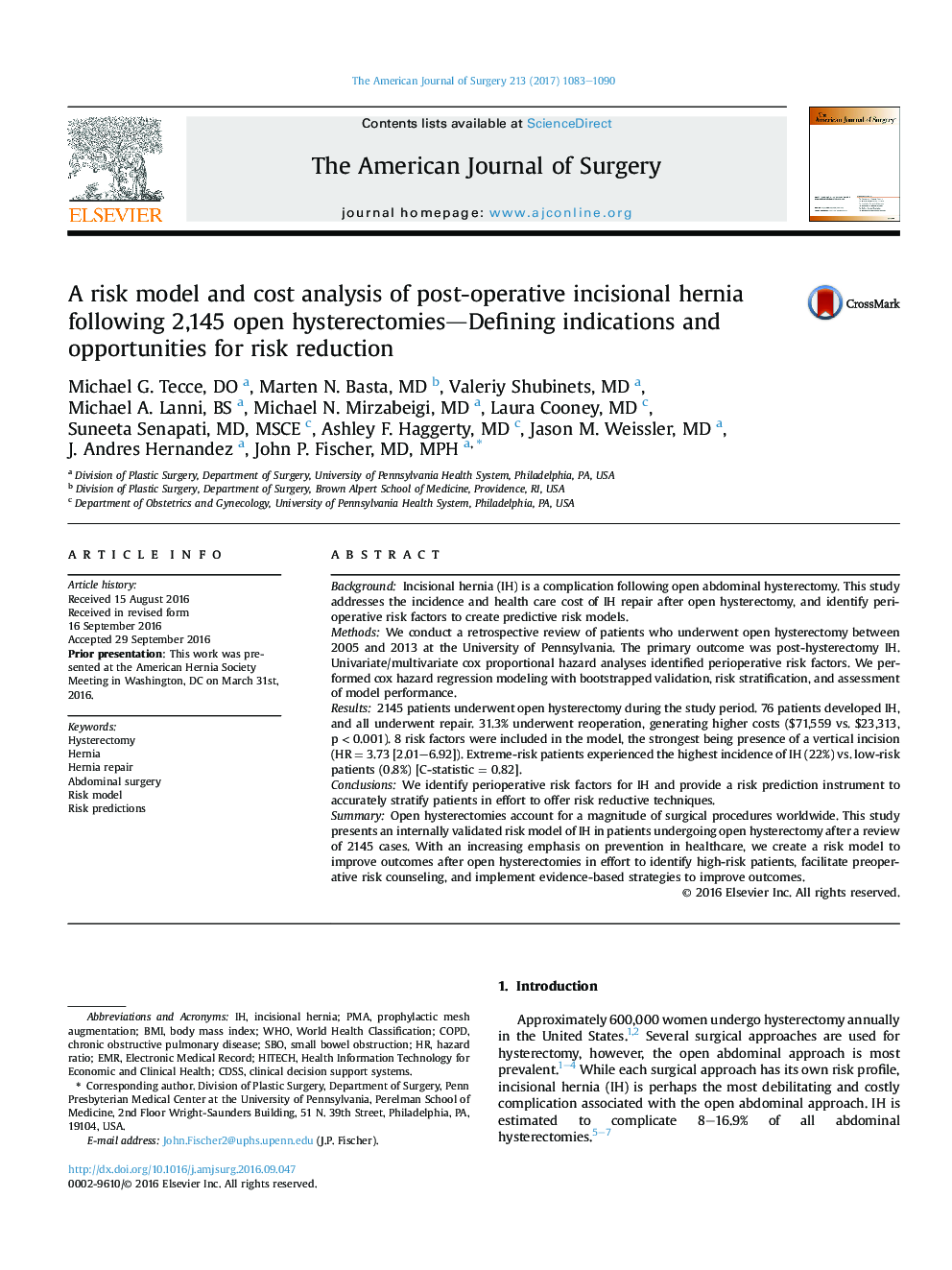| Article ID | Journal | Published Year | Pages | File Type |
|---|---|---|---|---|
| 5731251 | The American Journal of Surgery | 2017 | 8 Pages |
BackgroundIncisional hernia (IH) is a complication following open abdominal hysterectomy. This study addresses the incidence and health care cost of IH repair after open hysterectomy, and identify perioperative risk factors to create predictive risk models.MethodsWe conduct a retrospective review of patients who underwent open hysterectomy between 2005 and 2013 at the University of Pennsylvania. The primary outcome was post-hysterectomy IH. Univariate/multivariate cox proportional hazard analyses identified perioperative risk factors. We performed cox hazard regression modeling with bootstrapped validation, risk stratification, and assessment of model performance.Results2145 patients underwent open hysterectomy during the study period. 76 patients developed IH, and all underwent repair. 31.3% underwent reoperation, generating higher costs ($71,559 vs. $23,313, p < 0.001). 8 risk factors were included in the model, the strongest being presence of a vertical incision (HR = 3.73 [2.01-6.92]). Extreme-risk patients experienced the highest incidence of IH (22%) vs. low-risk patients (0.8%) [C-statistic = 0.82].ConclusionsWe identify perioperative risk factors for IH and provide a risk prediction instrument to accurately stratify patients in effort to offer risk reductive techniques.SummaryOpen hysterectomies account for a magnitude of surgical procedures worldwide. This study presents an internally validated risk model of IH in patients undergoing open hysterectomy after a review of 2145 cases. With an increasing emphasis on prevention in healthcare, we create a risk model to improve outcomes after open hysterectomies in effort to identify high-risk patients, facilitate preoperative risk counseling, and implement evidence-based strategies to improve outcomes.
